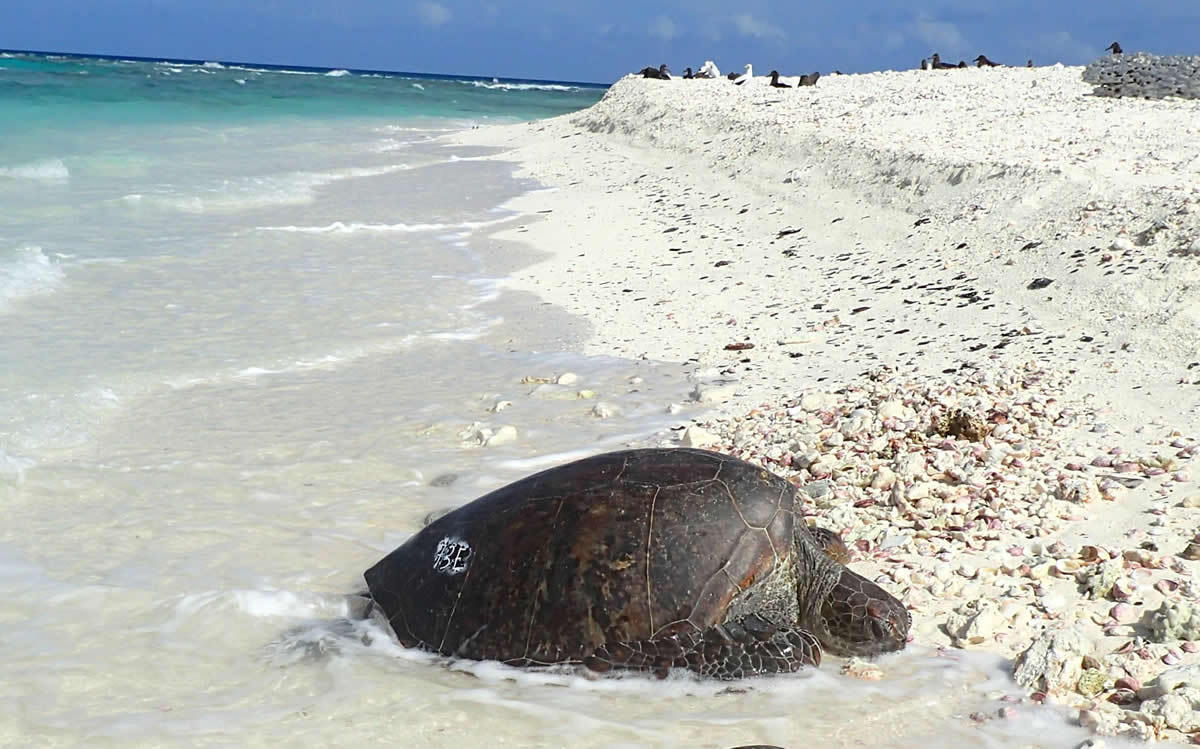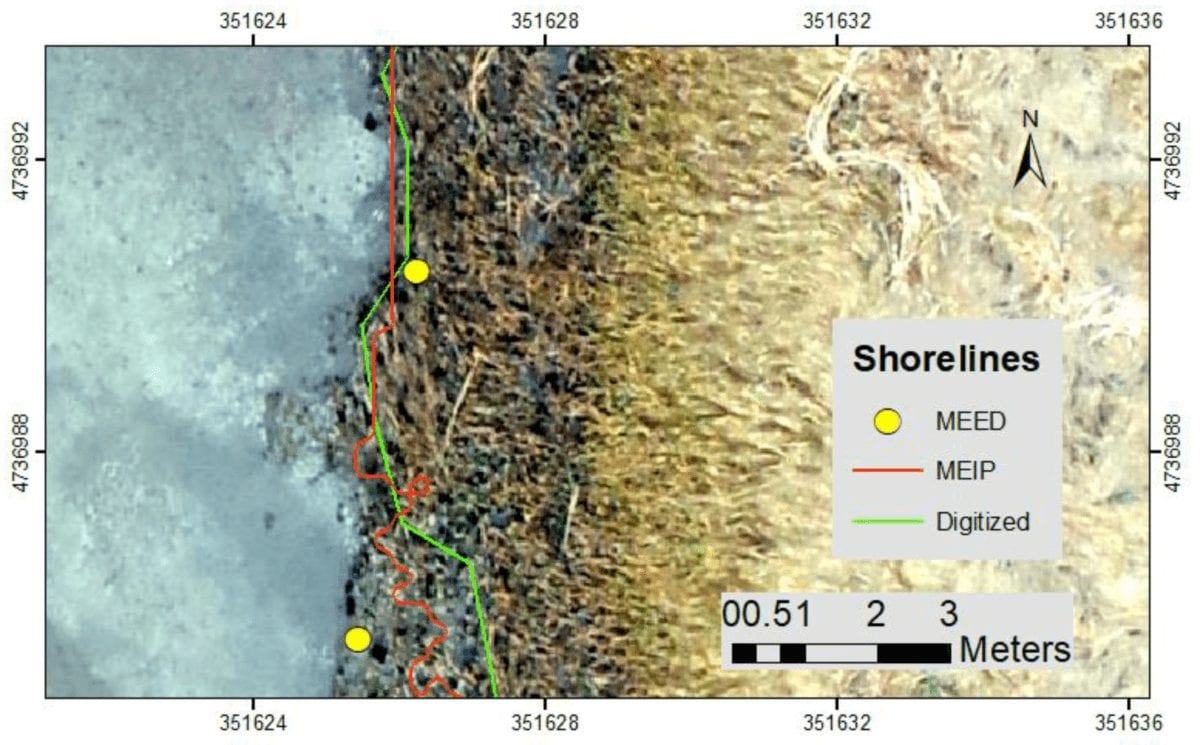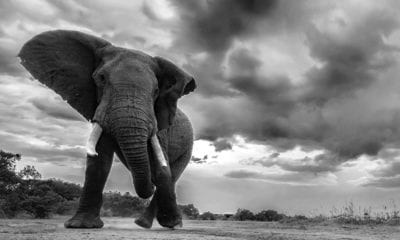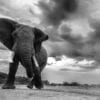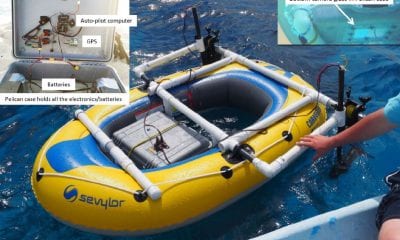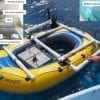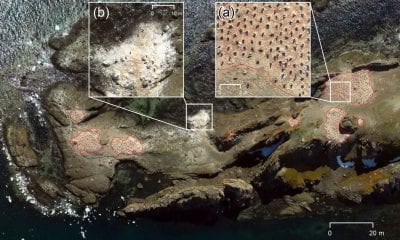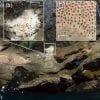It’s Complicated: Drone Research Reveals Caribou’s Complex Social Dynamics
New research which used drones for the first time to monitor and record a particular herd of barren-ground caribou has revealed that they are possibly not quite as conformist as was originally believed.
The drones were used to record the movement of individual animals within groups, and is one of the first to study social interactions within such migrating groups by using this technology; the footage offers a unique look at the behavior of individuals within the herd.
The new research by Andrew Berdahl of the Santa Fe Institute and Colin Torney of the University of Glasgow, used drones to collect overhead footage of Dolphin and Union caribou migrating to and from mainland Canada and Victoria Island in the last stage of their fall migration.
The Dolphin and Herd population of caribou are currently listed as ‘of special concern’ by WWF Canada.
The drones equipped with cameras provided the scientists with an overall and comprehensive picture of migration which revealed how social interactions motivate the animals’ every move.
After extracting trajectories of each individual caribou, the ecologists used this information to quantify how social influence impacts fine-scale movement patterns within the herd.

Dolphin-Union caribou migrating in northern Canada | Jeff Turner
Berdahl says new technologies such as drones provided the computer vision used in the study, and this is a really exciting development because it provides the ability to collect movement data on every single individual in a group simultaneously; he says this means they are now able to explore the important role that social interactions play in guiding migratory movements.
To date studies of animal migration were done by tracking a small subset of individuals through GPS collars and most failed to capture the dynamics between individuals within the herd.
The study’s revelations led the researchers to question the assumption held in the field of collective behavior, that individuals within a herd all behave similarly; the scientists say they found ‘enormous variation in sociality across sexes and age classes’.
Berdahl says for example they found that while calves are highly social, adult bulls tend to be much more independent.
The study also revealed that caribou follow ’highly isotropic interaction rules’ and are more influenced by herd members in front of them than by those beside them.
According to Berdahl this leads to an asymmetric information flow through the herd and is in line with the traditional knowledge of the Inuit, which states that a subset of ‘lead’ caribou effectively guide the path of the annual migration.
The study authors state that collective behavior is important because social dynamics can have population-level implications, and the framework they lay out could be used to explore individual and collective movement in a wide variety of animals and environments.
They say to clearly understand migration in detail, it is important to know the social context driving movement decisions in the context of the behavior of most of the herd at the same time.In 2015,using a drone with limited battery life, the team captured 12 hours and 40 minutes of footage of the running caribou in short clips; when this information was fed into a computer vision program it identified the unique caribou in each frame, then linked the animals’ positions to get their individual trajectories.In this way they were able see each animal’s behavior in relation its neighbors—visualizing what were “essentially traffic rules for caribou.”
This footage revealed great variation in the interactions within the herd, showed a range of interactions – who stayed close to who, who paid attention to who,and who seemed to have the most influence on others when it came to moves.It also revealed the importance of age, sex, social status, and reproductive status in the animals’ movement choices.
Researchers used drones to track the movements of individual within a migrating herd.
Typically bull males were the least likely to take cues from others, while young calves tended to be copy-cats and the caribou were more influenced by herd members in front of them than by those beside or behind them – which possibly implies more experienced animals take up front positions that let them teach younger individuals the migration route, once again supporting traditional Inuit knowledge that as herds travel, a subset of lead animals effectively determines the path of the group.
Berdahl says, more experienced animals presumably take up front positions which allows them teach younger individuals the migration route.
The authors believe their technique provides a way to examine how social information is used at different life stages, how behavior varies throughout the year, and whether some individuals are persistent leaders or followers.
Berdahl says every individual step an animal takes is a decision which depends on social cues in concert with environmental ones such as obstacles and incentives along the path and he hopes that closely examining such cues can offer clues to the motivations and pressures that drive caribou movement, plus insight into the leadership dynamics of herds—especially as some are forced to forge new paths in a rapidly changing environment.
Iain Couzin of the Max Planck Institute for Ornithology in Germany, an expert on collective behavior not involved in the study, says it is very exciting to be able to use new technology to obtain quantitative information about large animals on the move as such data is very difficult to acquire.
Couzin says drones are opening up new opportunities for biologists and are giving access to systems that are incredibly hard to study. Couzin in his own research,says he looks forward to taking “a hybrid approach, using different technologies at different scales to get a more comprehensive picture” of animal movements in natural settings.. “These interactions don’t happen in a barren environment,” says Couzin.
There is clearly immense potential for drones to gather additional layers of information—such as high-resolution, 3-D images of the migration landscape—to put the animals’ behaviors into even more detailed context and Berdahl says this ‘ developing methodology’ could be applied to many animal systems and could well, Berdahl adds “ revolutionize studies of this kind.”
Drone footage courtesy Andrew Berdahl et al. Camera footage courtesy Jeff Turner, River Road Films, Ltd. Edited by Nate Kitchens for the Santa Fe Institute.










